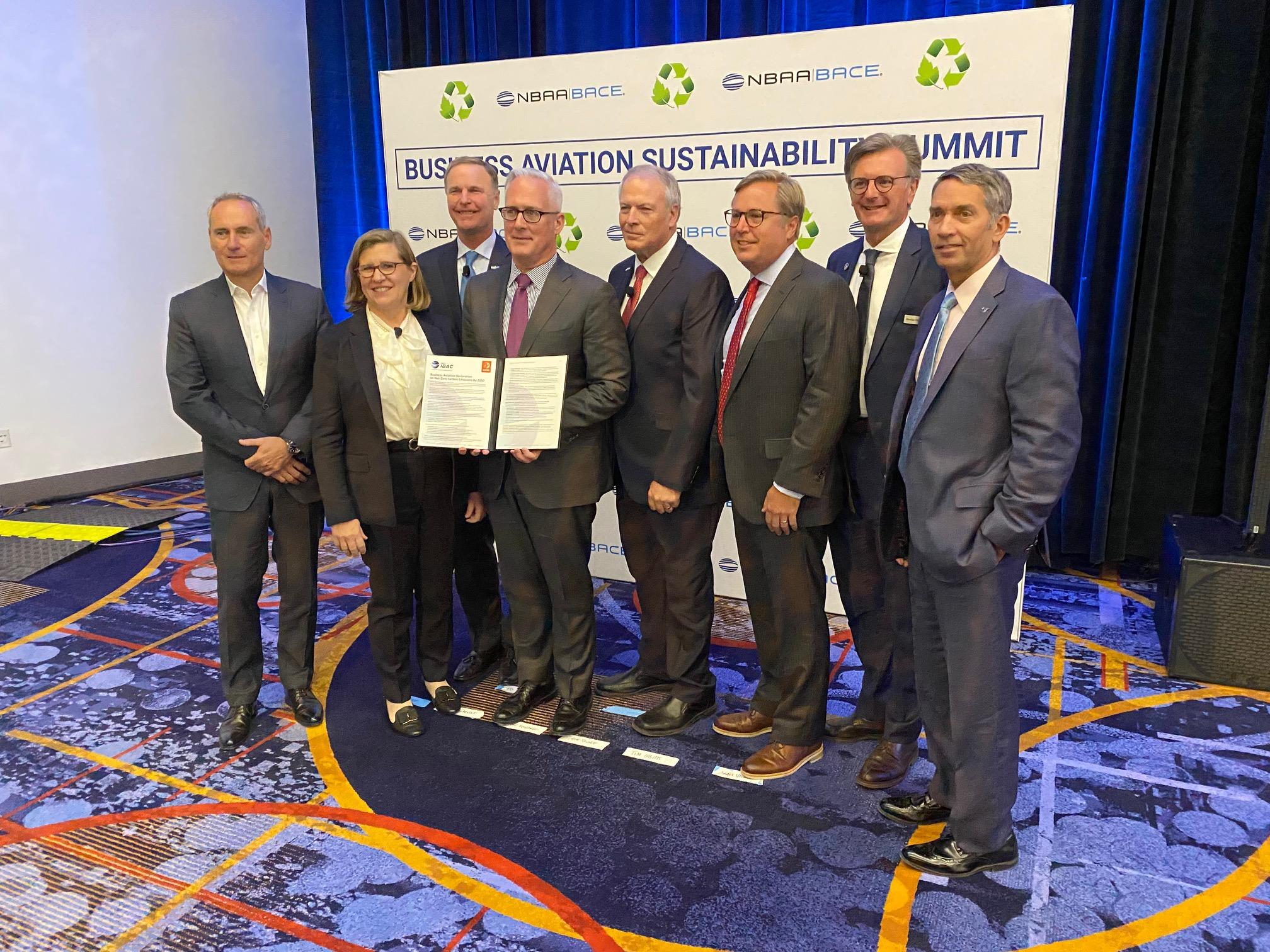
Leaders of business aviation associations pledged to meet net-zero carbon emissions by 2050 during an NBAA-BACE media breakfast, held Oct. 12 before the conference’s official opening.
The leaders of several associations gathered to endorse an updated Business Aviation Commitment on Climate Change declaration sponsored by the International Business Aviation Council and General Aviation Manufacturers Association (GAMA).
The declaration commits the industry to achieving net-zero carbon emissions through a combination of measures, including new engine technology, the use of sustainable aviation fuels (SAF), modernized air traffic control and airport infrastructure and market-based measures such as voluntary offsets.
The industry already has met short-term targets it set in 2009, to achieve 2% annual fuel efficiency improvements from 2010-20, speakers said during the media breakfast.
“In 2005, we were 16 million metric tons of emissions,” said NBAA President and CEO Ed Bolen. “We had hoped to get down to eight. We can go all the way down to four and we’re driving that quickly down to zero because we are making advances in other areas.”
Bolen added: “As a result of the progress that we have made over the past decade, we will be carbon net-zero by 2050 by using SAF, new propulsion systems, [improved] operations, technology, infrastructure and market-based measures. This is our commitment today.”
Achieving net-zero carbon emissions will require a multipronged approach by manufacturers, including “aerodynamic optimization” through the use of composites, advanced alloys, skin coatings and active winglets, GAMA says. But speakers said that lowering the cost of SAF will be key to success.
“Getting the supply to meet the demand is going to be critical,” said Elizabeth Dornak, DuPont director of aviation and NBAA board chair. “Obviously, when that happens, the price will go down. I think it is something that flight departments and aircraft operators will be able to build into a budget, if we have a sense of what the economic impact is.”
Nicolas Chabbert, senior vice president of the Daher aircraft division and GAMA chair, concurred. “We need to have Jet-A stay pretty much the same price where we are,” he said. “We have to be able to justify for our businesses, so therefore our customers, a way to continue to fly. There are some people that simply say to us, if there is a doubling in price today, we’ll basically quit flying.”
